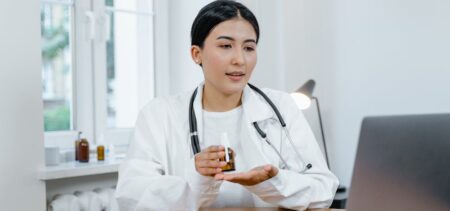As the new coronavirus outbreak spreads across China and several other countries around the world, fear, rumors, and speculations follow. However, the current scientific data does not support the alternative theories disseminated online. Even though this virus is new, event though evidence shows it was indeed discovered in China and reported by Chinese authorities, it is still part of the coronavirus family, a well-known group of viruses that affects both mammals and birds.
These types of viruses are normally found among animals like camels, cattle, cats or bats. A coronavirus can seldom pass from one species to another, for example from an infected animal to humans. This was the case with SARS between 2001 and 2003, and with MERS in 2012. It also seems to be the case with the current coronavirus outbreak.
Any new virus is a potential danger to those infected and, in certain situations, an outbreak can have an epidemic or pandemic capacity. Only science can help us paint a clearer picture of how the outbreak will evolve. Only researchers and physicians can establish the key elements that will help us assess if and how this outbreak can be contained.
What Do We Know About the Virus?
Basic information from China revealed that numerous people infected with the virus called 2019-nCov were somehow connected to a livestock market in Wuhan, China. Chinese authorities closed the market believed to be the epicenter of the outbreak and banned the selling of live animals at other food markets. However, the fact that the virus is already spreading throughout several other countries, along with the epidemiological analysis of these new cases reveals that transmission also takes place from one human to another.
The scientific community has yet to reach a conclusion regarding how easily the virus is transmitted. Early research suggests that the basic reproduction rate associated with the 2019-nCov virus may range from 2.0 to 3.1, while the World Health Organization (WHO) released a more conservative estimate of 1.4 to 2.5.
WHO classified the 2019-nCov outbreak as a public health emergency of international concern. However, the WHO Emergency Committee said it “believes that it is still possible to interrupt virus spread, provided that countries put in place strong measures to detect disease early, isolate and treat cases, trace contacts, and promote social distancing measures commensurate with the risk.”
How Is the Virus Transmitted and What Are the Risks?
The most likely way of transmitting the virus from human to human is through coughing or sneezing. Its mechanism is the same as that of the common flu and other respiratory infections. Good hygiene and safe food practices are essential in order to reduce exposure. Even so, the outbreak has already spread across continents after infecting thousands all over China. As the number of cases increased, the US State Department warned its citizens not to visit China and prevented foreign nationals from entering the country if they’ve recently traveled to China.
These measures were taken while laboratory-confirmed infections showed no consistency of symptoms or effects. While some people displayed almost no symptoms after contracting the disease, others—especially elderly people with other associated pathologies—we’re struck by serious illnesses, some of them even fatal.
However, the fatality rate of 2019-nCov remains low when compared to SARS, which resulted in no less than 774 deaths in eight months. The new coronavirus has a mortality rate of approximately 2%, while SARS killed 9.6% of those infected. The real cause of concern when talking about the new virus is not the mortality rate, but its rapid spread. In just one month, the number of those infected has exceeded that of SARS in total.
Although most of those who had contracted the disease have already made full recoveries, panic remains an issue, both online and offline. Business Insider quoted Amira Roess, professor of Global Health and Epidemiology at George Mason University’s College of Health and Human Services saying: “There’s the spread of infectious disease, then there’s the spread of panic.”
While for the time being there is no antiviral treatment for 2019-nCov virus, panic can and should be treated with correct information and scientific data. It is crucial to remember the fact that most of the people who died had other associated pathologies that resulted in complications after they were infected with the 2019-nCov virus.


























